Text/Yangcheng Evening News all-media reporters Huang Songwei Yang Yuanying
Photo/Yangcheng Evening News all-media reporters Wang Zebao and Yang Yuanying
Video/Wang Zebao Yang Yuanying Huang Songwei Luo Yang
When you think of "tide", what comes to mind? Maybe you think of Dongshankou in Guangzhou, which is "tide-ridden", or think of the handsome men and beauties on the streets of Shanghai and Chengdu. There is also a "tide" that uses colors to communicate and graffiti to write one's feelings.
In the atrium square of Shunde IF1959 Cultural and Creative Park, there is a graffiti wall of more than ten square meters. The paintings on the wall were painted by 11 graffiti artists, and Ben is one of them. "I don't expect the work to be kept for a long time. For me, it has nothing to do with me after the work is completed." Maybe not. On the evening of July 5, a young man came to check in and was taking a photo with the wall. Ben next to him showed his rare shy smile.
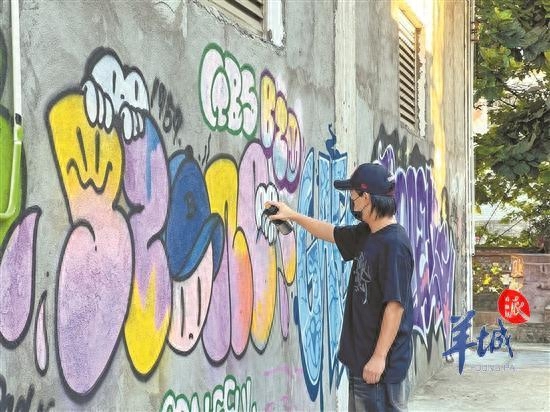
Find a place to paint
Graffiti is represented by the plural Graffiti in English and its singular word graffito. Both words originate from Greek and mean "writing". When talking about graffiti, it usually means that the graffiti artist presents his or her graffiti name on the wall in three different art forms: signature (tag), quick graffiti/throw ups (throw ups), and high-integrity graffiti work (piece).
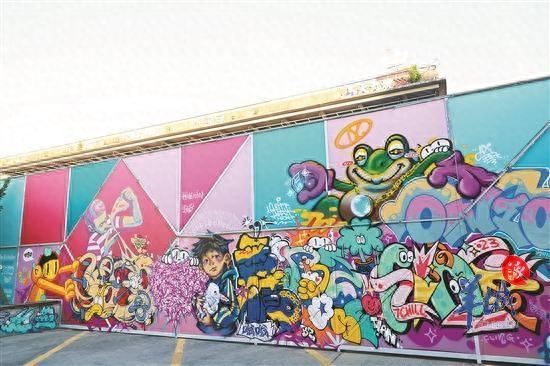
"Graffiti people have been writing their names. In the past, graffiti was regarded as psoriasis on the streets, or 'puppy peeing', leaving marks everywhere." In recent years, Abeng has seen graffiti become a kind of style under the influence of other trend elements. People often encounter the international style of "contemporary art, street art, and trendy art" on the streets and around the corner.
A Ben is from Beijiao, Shunde. When he was a child, he had seen graffiti walls in some music videos, such as Jay Chou's. Graffiti is cool and completely different from painting on paper. He bought two bottles of spray paint and started doing it. Another Shunde native, Jie Kun, is a graffiti star on the "Little Red Book". He tried graffiti to commemorate his favorite stars.
Jay Kun drew Kobe in an arena. Not long after Kobe passed away at that time, he took the initiative to contact some basketball stadiums. "I told them that I wanted to commemorate Kobe and please allow me to create there." Later, in order to find more "painting walls" for his own creation, Jie Kun often took the initiative to contact the art park while looking for abandoned buildings and factories. , and try to get their permission.
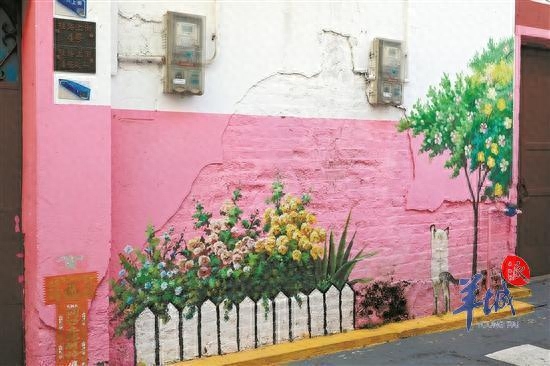
"Thanks to this era," more and more young people are entering the park, and more and more parks are accepting graffiti, Mr. Tu said. Likewise, Ben needs to find a place for himself to paint. He likes to create freely and quietly without being disturbed or even interrupted.
It is said that each graffiti artist has his own signature and style. Jie Kun's tag is "Mr. Rabbit". He prefers realistic character themes and uses bold colors to make people feel happy by creating a "colorful" atmosphere. For this reason, he had to use a trolley to place nearly a hundred bottles of oil-based paint of various colors while he was working. He believes that graffiti is a form of self-expression and is not limited to spray painting on walls with hands. As long as the work has the "temperament" of graffiti, it can be called graffiti.
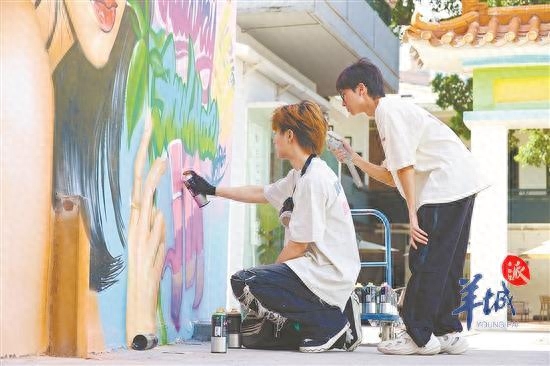
On the other hand, graffiti people need to be proficient in using paint, because graffiti is not like painting with a pen and can be coupled slowly. When the paint is sprayed, it is in an atomized state, and the characteristics of the mist must be grasped. "Graffiti people who use spray paint need to paint quickly and complete each line quickly. This relies on muscle memory, just like skateboarding. They need to practice their movements well through continuous practice." Abeng said.
For Aben, individuality and improvisation are the key words of graffiti. He often improvises, "For example, if I see a discarded doll on the street, it can appear in my work."
The desire for expression written in genes
In the basketball and skateboard theme park in the IF1959 Cultural and Creative Park, the basketball hoops and skateboard U-shaped pools on the court are covered with graffiti. Abben and his team tried to restore the scene of the American neighborhood in the 1990s, allowing young people to express themselves freely and write their names here.
Ben's signature is a pair of "eyes", derived from a horizontal "B". These eyes appear in all his works, "as if they were secretly glancing at something." Graffiti should not draw unoriginal things. Those that are just to attract traffic can be called wall paintings and advertising paintings. In short, they are not graffiti.
He also said that graffiti people are like ancient literati who visit a certain mountain or building and like to inscribe words and poems to leave their mark. If we go back further, graffiti can even be said to be an "essential behavior" of human beings. "People in ancient times were chiseling and painting in caves, which was actually graffiti. Do children scribble on the walls at home? This is the desire for expression written in our genes."
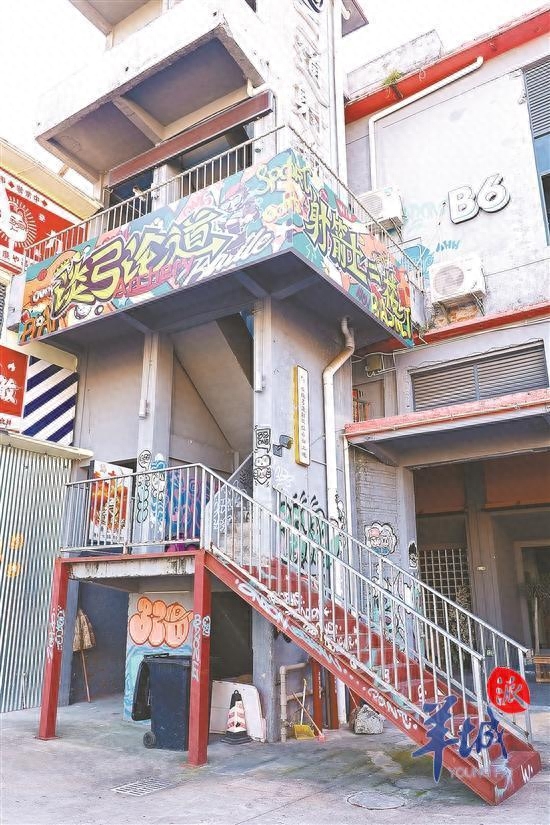
You must draw something when you meet
The graffiti wall in the atrium square of Shunde IF1959 Cultural and Creative Park was jointly created by 11 graffiti artists when the park held the second street art festival. A Ben introduced that each of them has his own style: those who write in Chinese, those who write in English; cute, trendy... "A boy likes to draw rabbits, and he raised rabbits at home. This is his self-portrait, holding a rabbit. Rabbit".
He remembered that everyone had an impromptu exchange after arriving at the scene that day, "What do you draw, I draw what, you draw this, then I can add a little bit of that." On the wall, a giant frog towered over all the crows. It turned out that the person who painted the frog arrived late. Everyone had already finished painting the lower half of the wall. He asked: Can I draw a frog underneath? "It's a very interesting interaction." Abben said that when creating together, everyone wants to have fun. They are not as particular as when creating by themselves, but more about enjoying the process itself. This is also the original intention of holding a street art festival.
He found that after they completed the wall, the dancers came, the young ladies and young brothers who took photos of outfits and clocked in came. "Originally, it was a big white wall, a wall that no one cared about, with no content or spirit. After graffiti appeared, more people paid attention to the wall and slowly formed a 'community' here."
In fact, graffiti does not necessarily have to be "on the wall". Ben can draw some graffiti-style manuscripts, or create creations on hats, shoes, skateboards, stationery and other objects. He has a teammate who has graffiti on almost everything in his house. "This is the inertia of graffiti people, and it is also a problem. When you see something, you can't help but want to mark it."
"'Pa Friends' is called 'Spray Friends' in Cantonese. People use paint to make friends, and when they meet, they must draw something, otherwise they will disappear." A Ben said. What’s even more interesting is that when you see a graffiti painting somewhere, everyone will be itchy and want to interact with it and “add a few strokes on the side.”
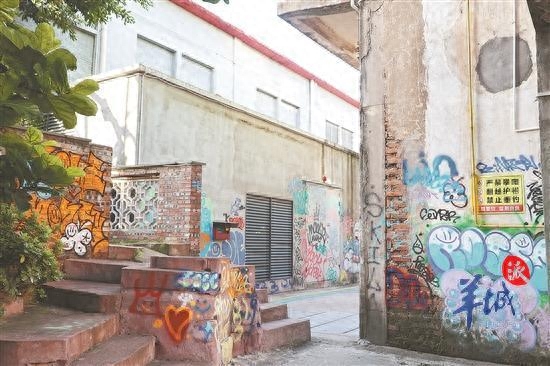
However, there is a tacit understanding among graffiti people - not to overwrite other people's works at will, otherwise it will be disrespectful to the original author. If you want to interact, lean aside. Overwriting should only be considered if the original work has faded significantly.
Abben and others in his Go Back Street team not only co-create offline, but also interact online. Whoever goes where and what they draw is posted to the group to communicate with each other and encourage each other to create more. He hopes that through graffiti, all street enthusiasts, street dancers and skateboarders can gather together to communicate and collide with each other, and perhaps more possibilities will emerge.
Use paint instead of language
There was once an exhibition with the theme of caring for the autistic group, and six artists including Ben used their own "language" to express their common care. For example, someone wrote a poem about autism using a graffiti font they designed, while Ben created a cartoon character holding a star in his hand.
In addition to them, the creators also include autistic people. The works were later placed in a place with a graffiti wall for viewers to write and express. "Autistic people are not good at expressing themselves with language. But in this space, we don't need language. We use paint instead of language and use paint to have conversations."
Abeng said that whether it is graffiti or other art forms, they are all communication methods that can break the "monopoly" of language. Works directly affect people's emotions. “This is where I am happiest when doing graffiti.” When tourists see one of their works and happily “take a photo” with it, it is the most intuitive proof of this influence.
In Ben’s view, there is no threshold for street art. Graffiti is painted on the streets and alleys, like an open "art gallery", no matter who comes and goes, they can see it. When Aben is creating on the street, workers passing by after get off work will stop and admire it, just like "a public gallery."
From this perspective, Ben feels that graffiti is open and very charming. "It's not like holding an exhibition. You can know how many people buy tickets every day. As a creator, you really don't know what will happen to your work and what possibilities it has. Is there someone here to shoot a video or something else? I don't know."
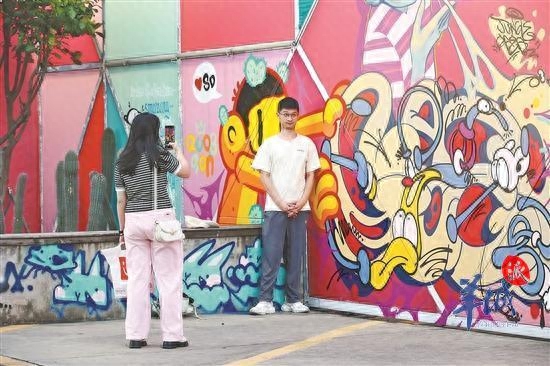
Find the possibility of your own graffiti
In Ben's view, graffiti has too many possibilities. He personally often painted birds, especially phoenixes. Once, he went to Hebei to participate in a national graffiti exchange event and thought about what could represent his city, so he thought of "Phoenix City" - Daliang Street, Shunde.
It was an accident for Ben that graffiti became his career. When he was still a pure hobbyist, friends would ask him to paint from time to time due to reasons such as opening a new store. He opened an account on "Little Red Book" and many opportunities came to him. "It was the 'business opportunity' that found me, not me taking the initiative to look for it."
If you enjoy graffiti, make a living from it. Now, his daily income mainly comes from doing "commercial graffiti" or graphic design. He also tries to carry out various cross-border linkages with graffiti, such as graffiti on the head of a dancing lion. After his hobby turned into a career, Ben worked hard to maintain a balance. After finishing his work, he gave himself a break to concentrate on creation.
"After the work is finished, it has nothing to do with the author anymore. It only depends on the life of the wall." Aben said that if you take the completed work too seriously, it will become a burden and a source of pressure. So, don’t think too much about gaining or losing, just do it. "I will not dwell on past works. If you ask me which work I am most satisfied with, I will answer you, the next one."
scroll
Editor: Wu Jiahong
Source: Jinyang.com
Articles are uploaded by users and are for non-commercial browsing only. Posted by: Lomu, please indicate the source: https://www.daogebangong.com/en/articles/detail/tu-ya-qing-nian-yi-qi-hui-you-chuang-zao-kai-fang-mei-shu-guan.html

 支付宝扫一扫
支付宝扫一扫 
评论列表(196条)
测试